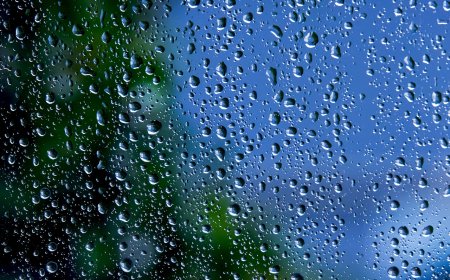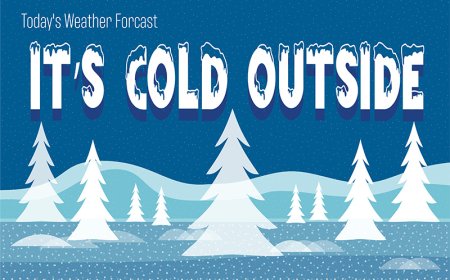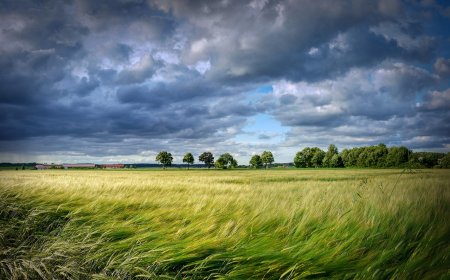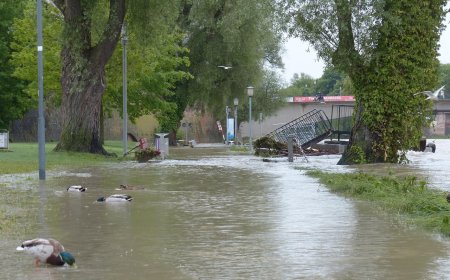Air Pressure & Temperature for Kids – Forces That Shape Our Weather
Learn about air pressure and temperature for kids. Discover how pressure differences and heat drive wind, clouds, fronts, and storms—all explained clearly and simply.
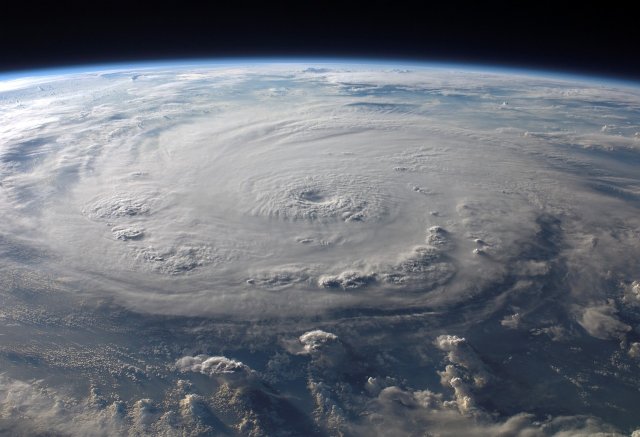
🧭 Introduction
Have you ever noticed how a sunny day can quickly turn into a stormy one? Behind many of these changes are two invisible but powerful forces: air pressure and temperature. These two elements are key to almost everything that happens in our atmosphere. Air pressure is the weight of the air above us, while temperature measures how hot or cold the air is. Together, they help create wind, clouds, and all kinds of weather events. Understanding them is like unlocking the secret engine behind the weather machine!
🌡️ What Is Temperature?
Temperature tells us how hot or cold something is. In weather, it measures how much energy the air molecules have. When the Sun heats the Earth, it warms the air above the ground. The more energy the air has, the faster the molecules move, making the air feel warmer.
Temperature is usually measured in:
- Degrees Fahrenheit (°F) in the United States
- Degrees Celsius (°C) in most other countries
When temperature changes, it affects air movement. Warm air rises because it's lighter, and cool air sinks because it's heavier. This up-and-down motion helps form wind, clouds, and storms.
🎈 What Is Air Pressure?
Air pressure is the force of air pressing down on Earth’s surface. Even though we don’t feel it, air has weight. The air above us pushes down all the time!
Air pressure is measured using a tool called a barometer. It’s usually measured in:
- Inches of mercury (inHg)
- Millibars (mb)
There are two main types of pressure systems:
- High-pressure systems – bring clear skies and calm weather
- Low-pressure systems – bring clouds, wind, and storms
When air pressure drops quickly, it’s often a sign that bad weather is on the way.
🔄 How Air Pressure and Temperature Work Together
Air pressure and temperature are closely connected. When air warms up, it expands and becomes less dense, which leads to lower pressure. Cooler air contracts and creates higher pressure.
This difference in pressure causes air to move. The movement of air from high to low pressure is what creates wind. This process helps move weather systems, like storms or cold fronts, across large areas.
Here’s a simple example:
- On a warm summer day, the ground heats up quickly.
- The warm air rises, creating low pressure near the ground.
- Cooler air nearby moves in to take its place.
- This movement of air becomes a breeze—or even a strong wind if the pressure difference is big enough.
☁️ Pressure Systems and Weather
Meteorologists look at pressure systems to help predict weather.
High-pressure systems:
- Air sinks slowly and spreads out
- Usually bring sunny skies and dry weather
- Winds rotate clockwise (in the Northern Hemisphere)
Low-pressure systems:
- Air rises and cools, forming clouds
- Often bring cloudy skies, rain, or snow
- Winds rotate counterclockwise (in the Northern Hemisphere)
When these systems meet, they form fronts—the boundaries between warm and cold air. These are the places where most weather activity happens!
📊 Measuring and Mapping
Meteorologists use weather maps and tools to track air pressure and temperature changes. These maps show:
- Isobars – lines connecting places with the same air pressure
- Color-coded temperatures – to show hot and cold areas
- Front symbols – to mark warm fronts, cold fronts, and more
This information helps scientists make weather forecasts that tell us what to expect in the coming days.
🌀 Real-Life Effects
Changes in air pressure and temperature can affect more than just the weather. They can also impact:
- Your body – Some people feel headaches or joint pain when pressure drops.
- Flying – Pilots adjust for pressure changes to fly safely.
- Fishing and wildlife – Many animals respond to changes in pressure.
- Storm strength – Hurricanes and tornadoes form where pressure and temperature shift quickly.
These invisible forces help explain why the weather can be unpredictable and exciting!
📚 Vocabulary Words
Temperature A measure of how hot or cold something is
Air pressure The weight of air pressing down on Earth
Barometer A tool used to measure air pressure
High-pressure system An area where air is sinking, bringing clear weather
Low-pressure system An area where air is rising, leading to clouds and storms
💡 Interesting Facts About Air Pressure and Temperature
- The Sun heats Earth unevenly, which creates all kinds of weather.
- Warm air can hold more moisture than cold air.
- The lowest air pressure ever recorded on Earth was during Typhoon Tip in 1979.
- You experience lower pressure at higher altitudes, like on a mountain.
- Air pressure helps your ears “pop” when changing elevation quickly!
👧 Kid-Friendly Summary
Air pressure and temperature work together to create weather. Warm air rises, cool air sinks, and this movement creates wind, clouds, and rain. High pressure brings sunny weather, while low pressure brings storms. These two invisible forces shape the weather we see and feel every day!
✅ Interactive Quiz
Q1: What causes wind?
A. Trees moving
B. Water rising
C. Air moving from high to low pressure
D. The Moon’s gravity
Q2: What tool measures air pressure?
A. Thermometer
B. Barometer
C. Rain gauge
D. Anemometer
Q3: What kind of weather is linked to low pressure?
A. Sunny
B. Windy and stormy
C. Cold but dry
D. Snow without clouds
Q4: What does high air pressure usually bring?
A. Rain and wind
B. Thunderstorms
C. Clear and calm weather
D. Snowstorms
Q5: Which air is heavier?
A. Warm air
B. Cool air
C. Fog
D. Wind
Scoring:
5/5 = 🌡️ Weather Genius
3–4 = 🌥️ Forecast Fan
1–2 = 📘 Time to Rise and Learn!


















































